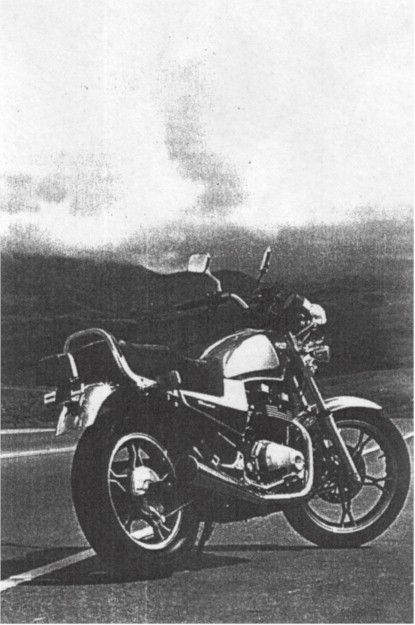| Reprinted from the July 1983 issue of Cycle World | ||
|
around 400 lb. A Triumph Bonneville with electric start weighs 444 lb. and a BMW R65 weighs 438 lb, Yamaha's Seca 550 weighs 424 lb. and the XS650 weighs 474 lb. This puts the GR650 on the lighter side of medium-weight, not really as light as the 450 class Twins, but significantly lighter than motorcycles of similiar engine size. What this means to the GR650 rider is less mass to throw around. Chassis geometry is as average as possible; rake 27.5 degrees, trail 4.4 in. Nothing surprising here. But bigger, heavier motorcycles with these figures aren't as toss-able as the 650 Suzuki. Particularly at low speeds the Suzuki is an easy handling bike. It invites riding on bad roads where a rider needs to steer at the last minute around obstacles or holes. The rest of the bike is happiest on back roads, too. The single front disc brake and rear drum brakes are better than Suzuki's fancier triple-disc systems with anti-dive. Because of difficulty bleeding the anti-dive systems on more expensive Suzukis, they lose brake feel; the 650 doesn't. Engine characteristics, and more important the gearing, also fit the low-speed nature of the 650. More than most any other mid-size Japanese Twin, the GR650 is tuned to provide lots of low and mid-range power. The swirl-inducting air jets, the carefully tapered and small intake ports and cam timing all make for an excellent, broad powerband. What it doesn't make is peak power. Up to 60 mph the 650 Suzuki is a joy to ride. At low speeds the engine is smooth and there are no gaps in the powerband. It pulls from idle, the two-stage flywheel doing its job without intruding. Below 3000 rpm it pulls like a tractor and is amazingly resistant to stalling when the clutch is let out too quickly. Above that the engine is somewhat more responsive, but there is no real transition. You don't feel the flywheel disengage or engage. The clutch is magnificent. Start the Suzuki cold, put it in gear and you don't hear a sound or feel a tug. It releases fully. It never gets grabby hot or cold. This can't be said for |
| |
